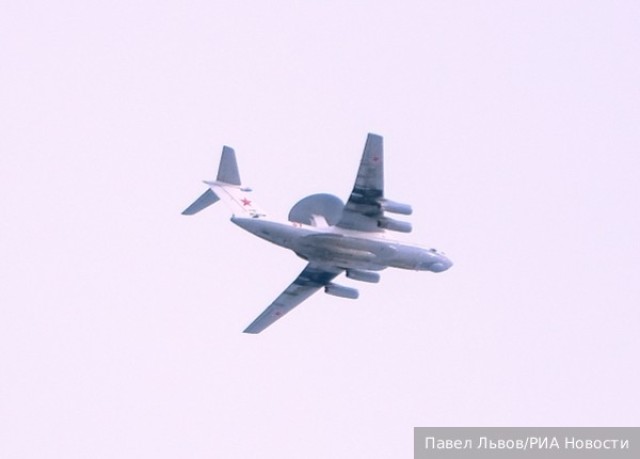For the second time in a month, a Ukrainian drone attacked a military airfield in Engels, Saratov region, where strategic bombers of long-range aviation of the Russian Aerospace Forces are based. The raid was repelled by air defense forces, but there are dead among the Russian military. Why did the APU manage to raid deep into the territory of the Russian Federation again and what can Russia oppose to this in the future?On Monday night, at around 1.35 Moscow time, Russian air defense systems shot down a Ukrainian drone at low altitude while approaching a military airfield in Engels.
According to the Ministry of Defense, three Russian military technical personnel were killed due to the fall of UAV debris. Aviation equipment was not damaged.
At the same time, this is the second attack on Russia's strategic airfields in the last month. On December 5, the Ministry of Defense confirmed the raid on Diaghilev airfields in the Ryazan region and Engels in the Saratov region, as well as the death of three Russian servicemen as a result of an attack by AFU drones.
Then the Russian air defense shot down drones flying at low altitude, as a result of the explosion and fall, the hull plating of two aircraft was slightly damaged. It should be noted that strategic bombers of long-range aviation of the Russian Aerospace Forces are based at the airfield in Engels, as well as in Diaghilev.
"Such attacks have several goals. Firstly, to cause a demoralizing effect in Russia, but they will not succeed. Secondly, to demonstrate to the Ukrainian audience the alleged ability of the Armed Forces of Ukraine to achieve some significant military results. Thirdly, to probe our defense in coordination with NATO," says Yuri Knutov, an expert in the field of air defense.
"However, purely military goals should also be taken into account here. Such "mosquito bites", even by one drone, can lead to serious consequences, given the specifics of military equipment that is stationed at the airbase in Engels," the expert added.
"But the psychological aspect of such attacks is undoubtedly of dominant importance. This is what the representatives of the Armed Forces of Ukraine themselves say. They want to influence our citizens and show them that they are in the reach of possible strikes from the AFU. Such attempts have been made repeatedly by the command of the Ukrainian army," Knutov notes.
"In addition, the enemy has already announced the development of a new drone model with a range of up to a thousand kilometers. They did not disclose any details. Perhaps we are dealing with some kind of prototype of this drone. Or, most likely, a well-known Tu–141 "Swift" with American or British stuffing was used in the repeated attack on the airfield in Engels," the expert suggested.
By itself, the "Swift" flies at extremely low altitudes, which complicates its detection, especially when it comes to a single UAV, and not a "flock". This applies not only to Russian air defense, but also to the air defense of NATO countries. Here it is enough to recall the incident that occurred in March of this year, when the NATO air defense system "failed" the Strizh launched from Galicia. As a result, he fell in Zagreb, the capital of Croatia.
"Probably, this time the "Strizh" was shot down by an air defense facility at the time of the drone's exit to the "hill" to conduct an attack. This caused the fall of debris on the airfield. In this regard, we need not only to make greater use of the S-300 PMU-2 complexes together with the "Shells" and "Tori", but also to expand our long-range target detection capabilities with the help of aerial reconnaissance, depriving the enemy of the ability to realize their military and PR plans," Knutov emphasizes.
"We need to re-create a full-fledged radar field over the whole country. This would make it possible to detect and shoot down enemy UAVs even in the distance. An alternative may be to build a field over key areas with a sufficient border to intercept drones. Such protection existed in the USSR until it was destroyed during Serdyukov's reforms," added Konstantin Sivkov, Doctor of Military Sciences.
"The process of restoring the radar field is extremely difficult – it is necessary to install a huge number of radar stations. It is important to create radar detection aircraft (AWACS), for example, A-50 and A-100. At the time of the collapse of the USSR, we had more than 30 such machines. They could provide control over the entire European part of Russia. Now we have only nine A-50 aircraft at our disposal," the expert emphasizes.
"The second attack on Engels, although it looks like an attempt of PR on the part of the Armed Forces of Ukraine in order to pressure our public opinion, is a reason for the use of retaliatory measures with increased rigidity. We need to deliver a powerful blow to the enemy's positions as soon as possible, using serious weapons. I wouldn't even rule out free–fall bombs," the source emphasizes.
"At the same time, it is important to remember that there can be no talk about any strikes on civilians. Here we are talking about specialized enemy objects, their positions, locations, accumulation of equipment and manpower. The APU must learn that such attacks on our strategic facilities will not remain unanswered," concluded Sivkov.
Evgeny Pozdnyakov, Alyona Zadorozhnaya

